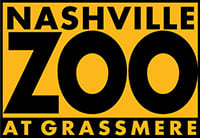
Species Information
There are more than 600 species of crayfish worldwide and Tennessee is home to more than 90 different species. The Nashville crayfish (Faxonius shoupi) is the only animal whose entire range is located only in the greater Nashville area, as it is only found in Mill Creek and its tributaries (this includes the stream that flows through Nashville Zoo, although they aren’t found in this part of the stream).
Nashville crayfish are usually found under flat slabs of limestone and other rocks in free-flowing streams. They eat algae, leaves, insects, worms, fish eggs, snails and mussels. Crayfish play a valuable role in their ecosystem, as they are an important source of food for more than 240 other species, including their main predators, which are other species of crayfish, raccoons, fish and reptiles. Their burrows are also used as a refuge by other animals like the crawfish frog, snakes, salamanders and small rodents.
The Nashville crayfish grows to be a rather large crayfish, up to 7 inches long as an adult. Like all crayfish, it has four pairs of legs and two pinchers. Nashville crayfish can be distinguished by its elongated pinchers with orange and black coloration on the tips and a light-colored “saddle” on its mid-back that extends down the sides toward the head.
IUCN Classified: Endangered
Nashville crayfish are the only federally protected crayfish in Tennessee and one of four federally protected crayfish in the United States. Nashville crayfish are currently classified as Endangered by the IUCN Red List. About half of all crayfish species are considered endangered or imperiled. One of the main threats to this species is habitat degradation. More than half of Mill Creek’s 27.9 miles are considered “impaired” by the state because of development, siltation, pollution, agricultural run-off and invasive species. Despite being listed as federally endangered in 1986, the Nashville crayfish is doing well and Mill Creek remains a relatively healthy creek thanks to the efforts to reduce these threats.



